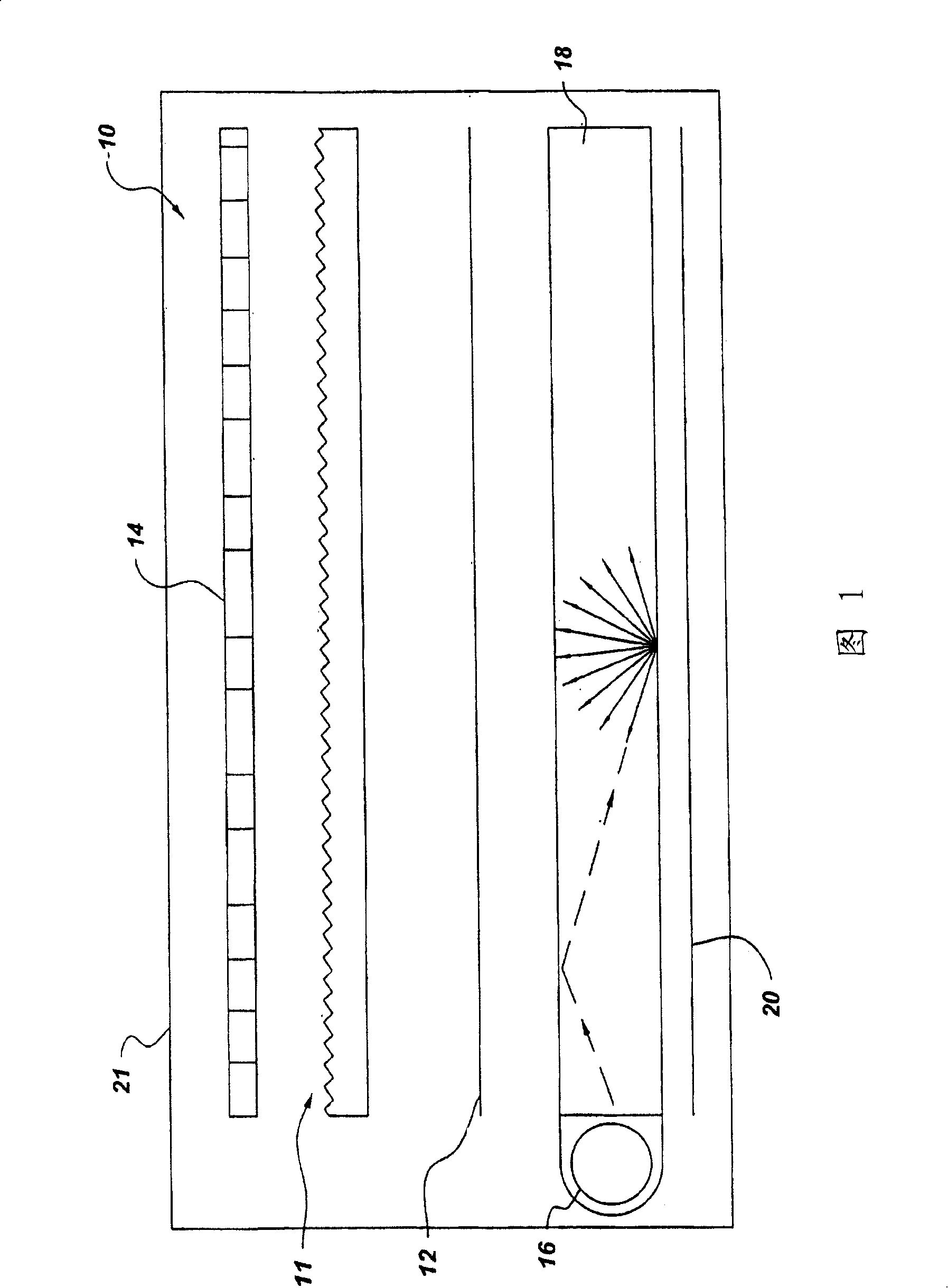Microstructure-bearing articles of high refractive index
A technology of microstructure and products, applied in the direction of diffusion components, instruments, optical components, etc., can solve problems such as unfavorable physical properties
- Summary
- Abstract
- Description
- Claims
- Application Information
AI Technical Summary
Problems solved by technology
Method used
Image
Examples
Embodiment 1
[0038] A 3-necked flask equipped with an additional funnel, a temperature probe and a mechanical stirrer was charged with 31.2ml of 2,2,4-trimethylhexane 1,6-diisocyanate and 50mg of dilauric acid Dibutyltin ester. The additional funnel contained 39.75 g of warm polycaprolactone diol (Mn.530), which was added to the contents of the flask at 55-60°C. The mixture was then stirred at 65°C for 14 hours. Subsequently, the flask was cooled to 55°C, and a mixture of 18.7 ml of 2-hydroxyethyl methacrylate and 100 mg of hydroquinone monomethyl ether was added while maintaining the temperature in the range of 54-58°C. The mixture was stirred at 55°C for 10-12 hours until the completion of the reaction was confirmed by infrared spectroscopy analysis. This product is the desired oligomeric polyurethane dimethacrylate, sometimes referred to as "oligomer dimethacrylate" below.
Embodiment 2
[0040] 105 g of titanium tetraisopropoxide was added to a mixture of 1000 g of 2-propanol, 49.05 g of concentrated hydrochloric acid and 5.25 g of distilled water under stirring. After adding 0.23 g 33% 4-OH TEMPO solution dissolved in 1-methoxy-2-propanol and 13.75 g 3-methacryloxypropyltrimethoxysilane, the resulting mixture was stirred at room temperature 72 hours. After 447 g of the solution was transferred to a round bottom flask and most of the volatiles were stripped using a rotary evaporator, the solution was heated at 50°C for 6.5 hours. Add 140 g of propylene glycol methyl ether acetate and continue stripping at 55°C under full vacuum. The stripping was stopped when the weight of the solution was 171 g, and another 137 g of propylene glycol methyl ether acetate was added to the flask. The stripping is continued until the weight of the solution is 236g. Gravimetric analysis was performed by stripping all the volatiles to determine the solid content of the obtained titaniu...
Embodiment 3
[0042] 49.5 parts of the oligomeric polyester polyurethane diacrylate mixture is commercially available from Sartomer Co. under the trademark "CN-985B88", and is vacuum stripped to provide 50 parts of titanium in the amount of the product of Example 2, Add 0.5 part of "Darocur 4265" (as a 10% solution in 1-methoxy-2-propanol). The resulting composition was spin-coated from 1-methoxy-2-propanol onto a bisphenol A polycarbonate plaque and cured by exposure to ultraviolet radiation emitted by a single "H" bulb. The resulting coating has a haze value of 0.43%, an abrasion rate of 25.7, and an adhesion rate of 0B. It is expected that the adhesion can be improved by adding a smaller proportion of polyfunctional (meth)acrylate monomers, and the adhesion is determined according to simple experiments.
PUM
| Property | Measurement | Unit |
|---|---|---|
| diameter | aaaaa | aaaaa |
| refractive index | aaaaa | aaaaa |
| haze | aaaaa | aaaaa |
Abstract
Description
Claims
Application Information
 Login to View More
Login to View More - R&D
- Intellectual Property
- Life Sciences
- Materials
- Tech Scout
- Unparalleled Data Quality
- Higher Quality Content
- 60% Fewer Hallucinations
Browse by: Latest US Patents, China's latest patents, Technical Efficacy Thesaurus, Application Domain, Technology Topic, Popular Technical Reports.
© 2025 PatSnap. All rights reserved.Legal|Privacy policy|Modern Slavery Act Transparency Statement|Sitemap|About US| Contact US: help@patsnap.com

